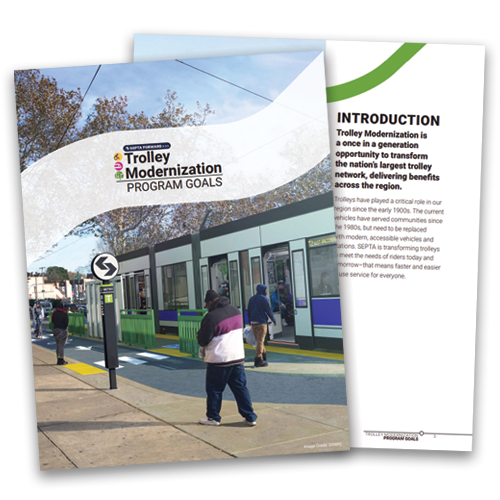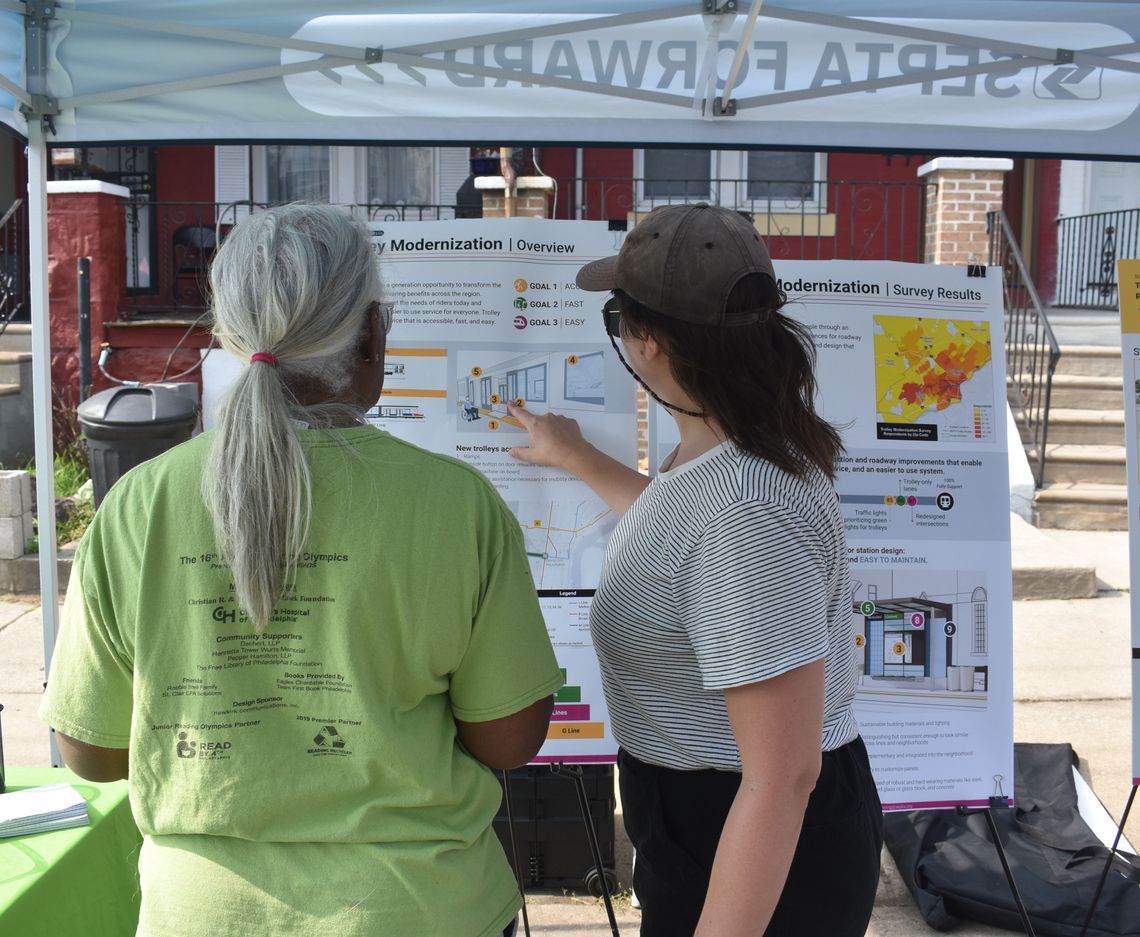
SEPTA TROLLEY MODERNIZATION STATION DESIGN PUBLIC ENGAGEMENT
PHILADELPHIA, PA
With the delivery of the new trolleys scheduled to begin in 2027, SEPTA initiated its Trolley Modernization Station Design Project. As part of the design team, McCormick Taylor led public education and outreach efforts aimed at gathering trolley station preferences, including roadway design, operational changes, station spacing and design, and amenities.
THE CHALLENGE
Trolleys have played a critical role in Greater Philadelphia since the early 1900s. The current vehicles have served communities since the 1980s, and need to be replaced with modern, Americans with Disabilities Act (ADA) accessible vehicles and stations. To accommodate the new vehicles, SEPTA is building new, on-street trolley stations and rebuilding existing trolley stations on all eight trolley lines.
More than 80,000 people rode the trolley daily in 2019 across West, Southwest, and North Philadelphia plus 12 municipalities in Delaware County. To ensure that a modernized trolley network will meet mobility needs and deliver benefits across the region, SEPTA selected McCormick Taylor to educate the public about Trolley Modernization, including current and potential riders, as well as operators, staff, and stakeholders.
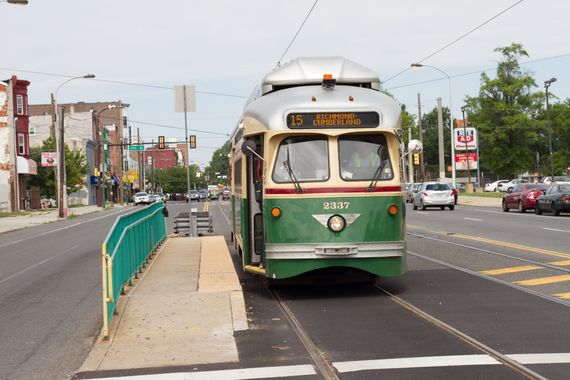
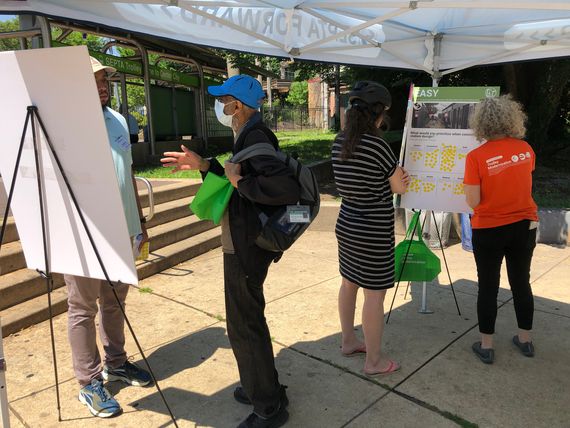
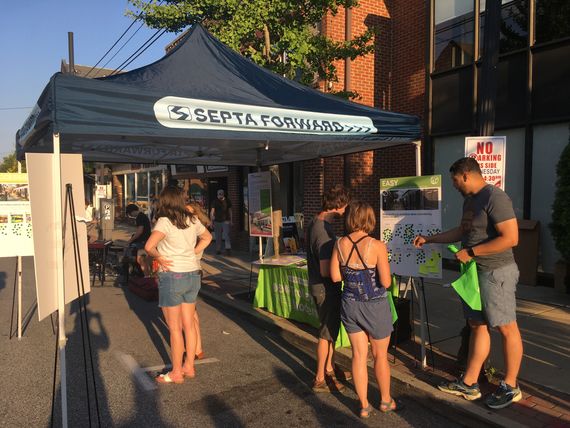
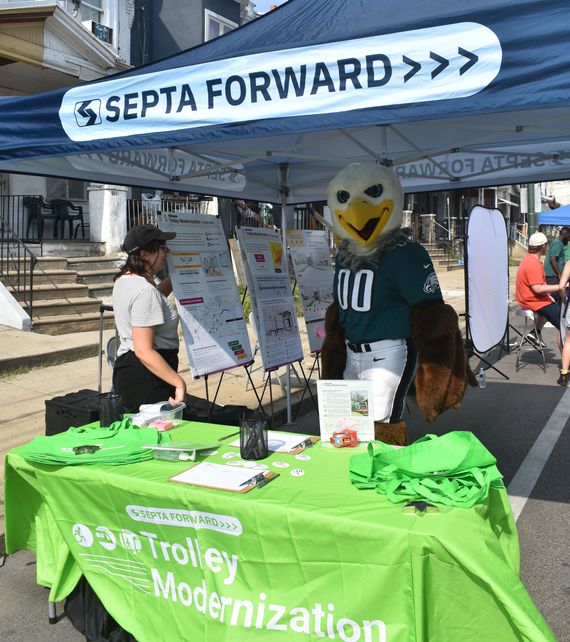
HOW WE HELPED
McCormick Taylor worked with SEPTA to develop and execute a two-phase, six-month long educational and engagement campaign. In the summer of 2022, through the first round of outreach, McCormick Taylor engaged over 4,000 people in an online survey and spoke to over 1,000 people at ten events. To hear diverse perspectives and make it easy for people to provide input, McCormick Taylor organized community engagement opportunities at events across Philadelphia and Delaware Counties, like the Upper Darby Pride Festival, Juneteenth Parade and Festival, Media’s Dining Under the Stars, and the Clark Park Farmers Market. We also heard from riders at trolley stations, including Darby Transportation Center, 15th Street, 33rd Street, and 40th Street. From this feedback, four station-specific design goals emerged: safety, green (sustainable), community character, and easy to maintain. Station design concepts were developed based on these goals.
During the second round of outreach in fall 2022, the team presented the public with station design concepts and asked for feedback on shelter shape, color, lighting, and “green” (or sustainable) design elements. McCormick Taylor gathered feedback through an online survey, eight in-person events, and a virtual public meeting. The survey resulted in 1,581 responses and over 600 people were engaged through in-person and virtual events. The in-person events were held at varying times and at locations throughout the region, including street festivals, a block party in Kingsessing, and pop-ups at trolley stations, like 69th Street Transit Center. For both rounds of in-person events, McCormick Taylor designed educational interactive boards that allowed visitors to use stickers and post-it notes to record their thoughts and select preferences.
Promotion of the survey and public engagement events were advertised using SEPTA's website, blog, eNewsletters, social media channels, and press releases; email notifications to subscribers, elected officials' and project partner social media and eNewsletters; and local news coverage. Outreach also included trolley operator interviews. McCormick Taylor and SEPTA visited three trolley depots where the team interviewed trolley operators and answered their questions about Trolley Modernization. Topics included how trolley service will improve, what issues the operators encounter, and problem intersections/congestion points.
RESULTS
Based on the input McCormick Taylor received from more than 8,000 participants. Our subconsultant, HDR, developed the SEPTA Trolley Station Design and Development Manual, which specifies standard dimensions to ensure accessibility, customer amenities, and safety are consistent, while being tailored to the unique circumstances of each location. The team also developed a colorful Executive Summary for the public, as well as informative materials for SEPTA’s planning.septa.org website. Completing the station design concepts allows SEPTA to continue with the four major phases of Trolley Modernization, which are Facilities, Vehicles, Stations, and Supporting Infrastructure.
